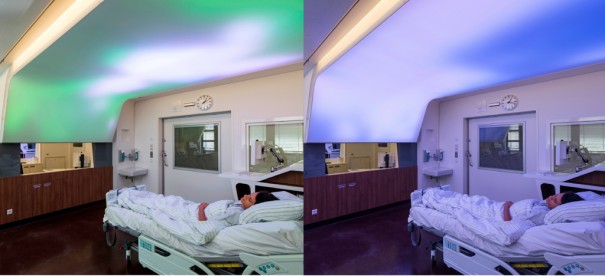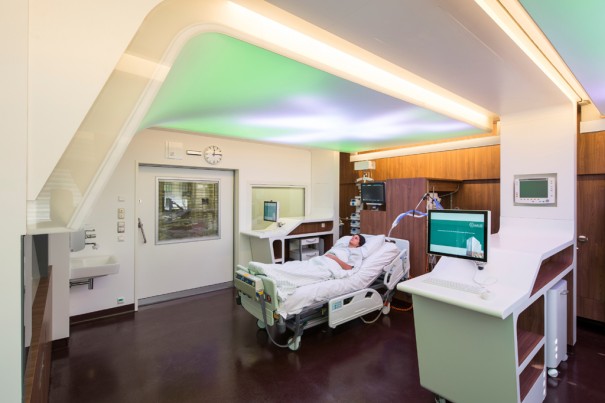Philips Luminous Ceiling creates a calming environment for critical ICU patients
The bright ceiling, based on LED technology, developed by Philips is intended for application in intensive care areas in order to create an environment that reduces stress for critical patients.
Philips has developed a bright ceiling (Luminous Ceiling) with LED technology that simulates daylight and provides a calming environment to critically ill patients in the hospital.
The ceiling based on LED luminaires has been introduced into clinical use at the Charité Campus Virchow Clinic in Berlin as part of a unique stress reduction concept called 'Parametric Spatial Design'(Parametric Spatial Design). The hospital staff can enter the desired parameters and the light area creates images and light moods adapted to the situation of each patient, thanks to Art+Com software. The Clinic has implemented the concept in two of the intensive care rooms in order to improve the healing environment of patients who are seriously ill.
According to research, Most people pass, at least once in your life, by the intensive care unit and, in many cases, patients' lives are at risk, as they wait for an operation or begin to recover after surgery. In this critical phase we, often find their environment irritating and hostile, Factors such as noise have been shown to, Inadequate light conditions or social isolation can increase critical patients' risk of falling into shock.
Until now there has been very little information on the health-related effects of hospital wards with a controllable environment.. For this reason, Intensive Care Physicians, psychologists and sleep researchers at the Charité Clinic in Berlin investigate, together with your partners at Graft and the design agency Art+Com on how they use the integrated spatial concept in the research that will be developed in the next twelve months.
Philips has played an important role in creating this innovative concept, thanks to its expertise in lighting design and technology.
The concept of Spatial Parametric Design was developed by architects from Graft, the design agency Art+Com and the Charité Clinic in Berlin, in the framework of a joint venture financed by the German Federal Ministry of Economics and Technology (.AIF).
“We found that, especially in critical areas such as the intensive care unit, Lighting design is becoming increasingly important in the patient's environment”, explains Roger Karner, Managing Director of Philips Lighting in Germany.
The Luminous Ceiling concept (Bright ceiling) Philips combines the natural dynamic rhythm of daylight with soft colored light effects and visual content. This roof incorporates 15.400 LED and extends from ceiling to wall facing the patient's bed, filling your entire field of vision.
In addition to RGB LEDs (colour), high-performance LEDs with warm white and cool white colour temperature have also been integrated. They are able to produce light output that is comparable to the light of a clear sky in summer.. This is the high level of light output offered by the biological effect of light in the intensive care room.. Supports the patient's natural day/night rhythms and helps promote healthy sleep patterns.
The first prototype of the Luminous Ceiling system is in clinical use, in the intensive care rooms of the Charité Clinic. This luminous Philips ceiling adapts to the needs of the patient, configuration that is introduced by the doctor through a tablet and that can be customized according to the characteristics of the patient thanks to a program that has been designed by Art + Com. In this way, It is possible to create the most appropriate environment for each situation.
Background
For many years, Philips has been researching and developing lighting systems its application was specially designed for the hospital environment. LED lighting technology enables a high level of control of color temperature and light intensity.
Philips has recently installed its HealWell lighting system, that simulates the dynamic and natural rhythm of daylight, at the German Heart Center in Berlin and other hospitals in Germany, the United Kingdom, the Netherlands, Central Europe, Middle East and Southeast Asia.
A pilot study carried out in conjunction with the University Clinic of Maastricht has investigated the effects of this system and has revealed that system c improved the quality of sleep of patients and their mood, In addition to increasing satisfaction among patients and healthcare workers.
You liked this article?
Subscribe to our RSS feed And you won't miss anything.





